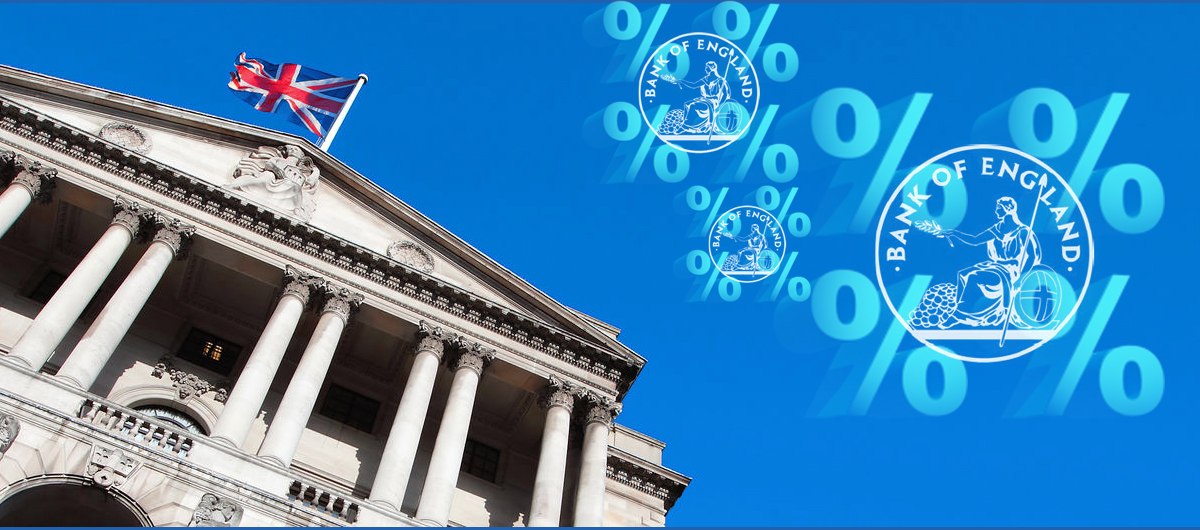
Multiple interest rate hikes set for 2018
Posted on: 26th February 2018 in
Mortgage & Property
Expats looking to buy property back in the UK pricked their ears up last week as Bank of England (BoE) economists were unusually clear in their warnings of expected interest rate rises in 2018.
The Bank’s governor, Mark Carney, signalled earlier this month that UK interest rates may rise sooner and by more than previously expected. He explained the rises as the consequence of a stronger economy and higher wages.
Multiple increases in bank rate in 2018 could see the current rate of 0.5% (which has reached an historical low) double, or more, within the next few months. Experts are expecting a rise from 0.5% to 0.75% in May – perhaps the first of several increases on the horizon.
“It is predicted that a rise in rates in May will cost the 3.7 million borrowers who are not on a fixed-rate mortgage an extra £1.3bn over a year.” (The Times)
What does this mean for borrowers?
In simple terms, expect to pay more for your borrowing! Bank rate increases will translate into increased borrowing rates, meaning your debt will cost you more. For most of us, mortgages represent our biggest debt and a rise in rates will mean higher monthly mortgage repayments – so locking in now to fixed rate deal could be an extremely wise move.
Why are interest rates going up now precisely?
There are several scents in the political and economic air that are causing a stir; Brexit not the least of them. “Swap rates” (a financial instrument that reflects what it costs the banks to raise the money they lend) are 30 per cent higher today than they were at the start of the year. Where swap rates go, mortgage rates are sure to follow – and everything points toward a rise.
But importantly, two major schemes that have been benefitting borrowers (and to a degree, penalising savers) are coming to an end and look set to have a huge impact on the banks’ behaviour: the Funding for Lending Scheme and the Term Funding Scheme.
Funding for Lending Scheme
The Bank of England launched the Funding for Lending Scheme in 2012 to incentivise banks and building societies to lend money and stimulate the economy. The intention behind the scheme was to help support small and medium sized companies by encouraging the banks to offer cheap credit. While the scheme certainly benefitted borrowers, it has had disastrous consequences for savers, as savings rates fell by two thirds to their lowest point last January.
The FLS closed last month and, with it, a source of cheap borrowing for the banks.
Term Funding Scheme
The banks are steeling themselves for a further blow as the Term Funding Scheme comes to an end this month too. You may never have heard of this before, but the Term Funding Scheme has had a noticeable impact since it was implemented in the wake of the shock referendum result in 2016. This unique measure was designed to ensure that the 0.25% rate cut following the Brexit announcement actually fed through to consumers. As such, the scheme enabled banks and building societies to borrow from the Bank of England for next to nothing, and unsurprisingly, the banks responded by borrowing with great enthusiasm!
Of the banks
The Guardian reports that “they have so far taken £106bn under the scheme, equal to around £3,500 for every working person in the country. Lloyds took 18bn, RBS £14bn, Barclays £10bn, Nationwide £9.5bn and Santander £8bn.”
At the end of February this scheme will be terminated, meaning that the banks and building societies will have to start repaying their loans. It seems inevitable that, in order to attract savers, banks will be forced to increase savings rates and, on the flip side, borrowers will feel the pinch as mortgage rates increase.
Who will be affected?
If you are on a tracker mortgage or on your lender’s standard variable rate, you are likely to feel the consequences of a rate rise immediately. In real terms, if you are on a £300,000 mortgage, a quarter per cent rate rise in May would mean an extra £400 a year.
If you are currently locked into a fixed rate deal, you won’t notice the effects straight away, but could face a very different market when you come to re-mortgage further down the line.
Buy-to-let investors may well be the worst affected by any rate increases. No surprises there then – after the slew of legislation last year making BTL more challenging for landlords. Changes in the law will mean that mortgage interest payments, which were once deductible as a business expense, will be fully taxable by 2020, making margins even tighter.
Is it too late to act?
No. If you are coming to the end of a fixed rate deal, or are currently on SVR, now is the perfect time to lock into one of the lower rate deals that are still available.
Contact your IFA today to switch to a longer-term fixed rate deal and get ahead of the mortgage market changes.




